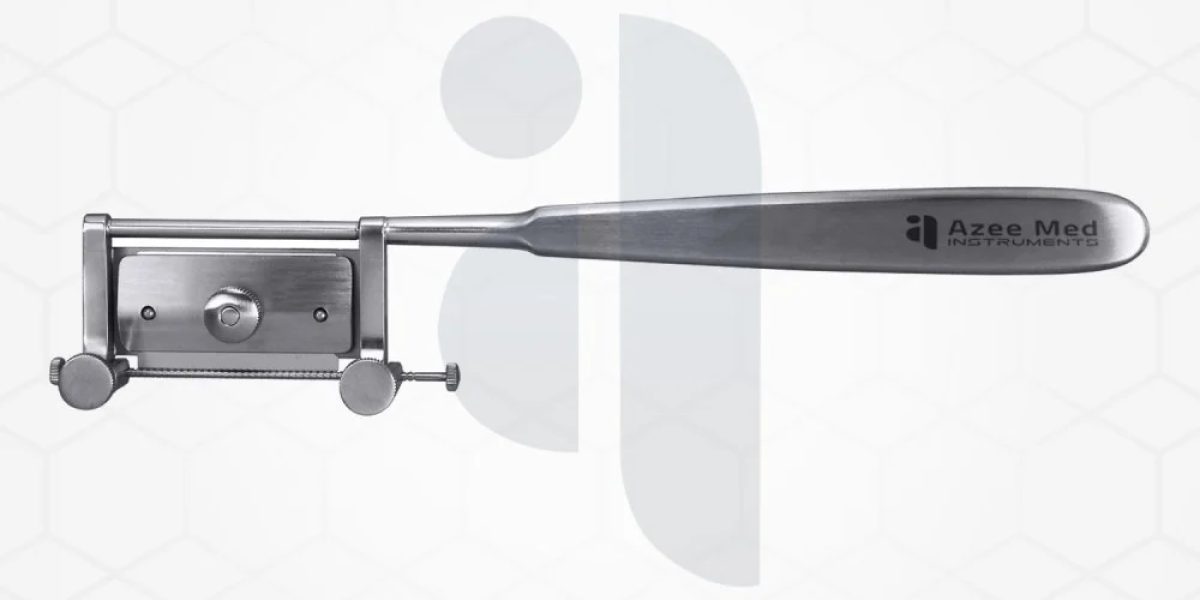The dermatome skin graft surgical instrument is an essential tool in the field of reconstructive and plastic surgery. Designed with precision, it is used to harvest thin layers of skin for grafting procedures, which are vital for treating severe burns, major wounds, and certain skin conditions. The dermatome skin graft enables surgeons to remove skin from a donor site on a patient’s body and transplant it to an area requiring repair. This process promotes healing and restores the skin’s structural and functional integrity efficiently.
-1000x1000.jpg.webp)
How Does a Dermatome Work?
Modern dermatomes are engineered for accuracy and consistency. They typically feature adjustable settings that allow surgeons to control the thickness and size of the skin graft. The device’s sharp blade glides smoothly over the skin, ensuring minimal damage to surrounding tissues. Advanced models even incorporate motorized functions, further enhancing precision and reducing the time required for harvesting.
Manual dermatomes require skill and experience, while powered dermatomes offer greater efficiency in complex cases. Regardless of the type, these instruments transform the challenging skin grafting process into a more manageable and predictable procedure, which is crucial for achieving optimal patient outcomes.
Applications of Skin Grafting
Skin grafting is often a life-saving treatment in medical emergencies such as third-degree burns. Beyond treating burns, it is also used in reconstructive surgeries following trauma or chronic conditions like bedsores and diabetic ulcers. The dermatome’s role cannot be overstated, as it ensures that skin grafts are prepared with precision, improving the likelihood of successful graft adherence and healing.
It’s essential to note that medical instruments often serve multiple roles depending on a surgeon’s expertise and case requirements. For example, in certain urological procedures, instruments like Guyon urinary sounds might come into play to address urinary passage issues, demonstrating how specialized tools contribute to diverse surgical needs.
Advancements in Dermatome Technology
Advances in technology have brought significant improvements to dermatomes in recent years. Modern devices are lighter, easier to use, and more adjustable, offering surgeons greater control over the grafting process. Safety enhancements, including better blade materials and ergonomic designs, have also mitigated risks like uneven grafts or skin damage.
These improvements not only enhance surgical accuracy but also accelerate patient recovery times. Minimizing trauma during tissue harvesting dramatically reduces the risk of complications, positioning the dermatome as a pivotal instrument in delivering superior medical care.
The Importance of Choosing the Right Instrument
Selecting the right dermatome for a procedure is crucial. Factors such as the nature of the surgery, the patient’s condition, and the surgeon’s preference all influence this decision. Manual and powered dermatomes each have their own advantages, and making the right choice can significantly impact the surgery’s success.
Medical professionals must also prioritize maintenance and sterilization to ensure the instrument’s longevity and safety. Regular inspections, proper cleaning, and adherence to sterilization protocols ensure the dermatome remains an effective tool for every procedure.
Conclusion
The dermatome skin graft surgical instrument is more than just a medical device; it’s a linchpin in the healing process for countless patients. By enabling surgeons to perform precise and effective grafting, it contributes to the restoration of damaged skin and improves overall patient outcomes. With ongoing advancements in technology, dermatomes continue to set new standards in surgical precision and efficiency, solidifying their role in modern medicine.












